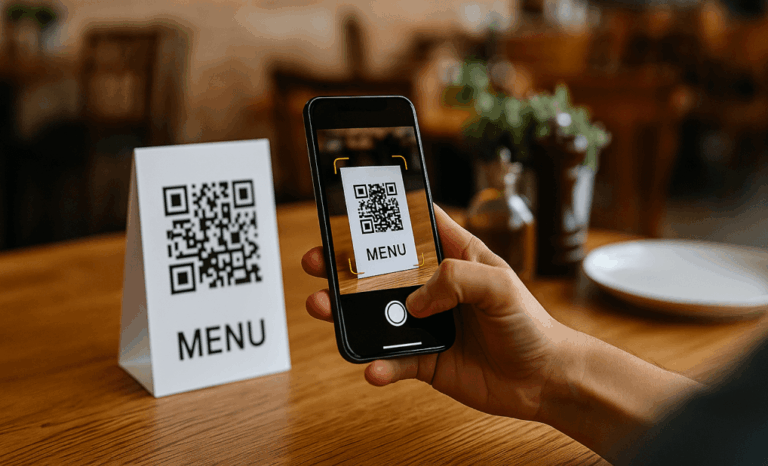QR codes have become a staple in modern dining, offering a sleek and contactless way to browse menus. But with rising concerns around data security and malicious links, many users are asking: are QR code menus safe? The short answer is yes—when used correctly. But like any digital tool, they come with risks worth understanding.
In this guide, we’ll explore how QR code menus work, the potential security risks, and how restaurants and customers can stay safe while enjoying the convenience of digital ordering.
How do QR code menus work?
A QR code menu works by linking a physical code to a specific web page—typically a digital menu hosted on a restaurant’s website or a third-party platform. When a customer uses their smartphone camera or a dedicated QR scanner app to scan the code, it redirects them to the online menu.
These quick response codes (QR for short) are a bridge between the physical and digital worlds. A single scan can instantly display everything from menu items and nutritional information to mobile ordering and payment options.
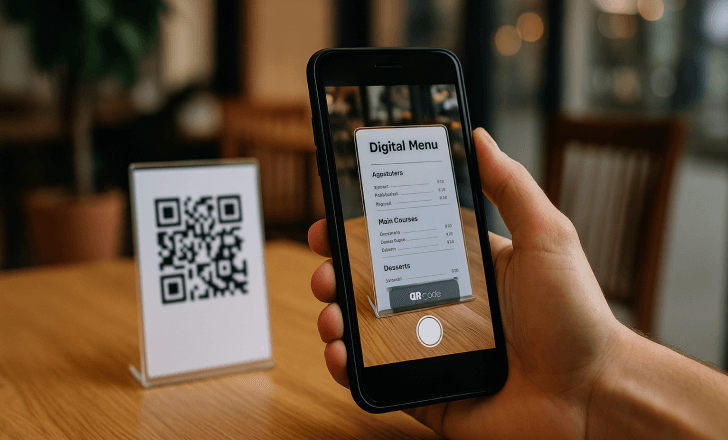
Why restaurants are switching from physical menus
The shift from traditional paper menus to digital ones has accelerated due to public health concerns and a push for greater efficiency. QR code menus offer:
- Reduced printing costs
- Real-time menu updates
- Contactless ordering for safety and convenience
For restaurants, using a QR code generator allows them to create dynamic QR codes that can be updated without reprinting the code itself. That’s a huge advantage when modifying menu items, adjusting prices, or highlighting daily specials.
Are QR code menus generally safe?
Yes, QR code menus are generally safe when created and distributed by a trusted source. Most restaurant QR codes are simply links to a menu hosted on a secure website. There’s no malware embedded in the code itself—it’s just a tool to redirect to a URL.
But that doesn’t mean there are no risks. Like any online link, a QR code can be manipulated by bad actors to trick users into visiting malicious QR codes.
What are the main security risks with QR code menus?
The biggest threat isn’t the technology—it’s how scammers can exploit it. Here’s where problems may arise:
- Fake codes: Attackers may replace a legitimate QR code with one that links to a phishing site or malware.
- URL shorteners: These can obscure the true destination URL, making it harder for users to verify where they’re being sent.
- Social engineering: Scammers can trick people into thinking they’re scanning a restaurant menu, when in fact they’re giving away personal info or access.
QR codes can also be used to trigger other actions on your phone, such as opening messaging apps, connecting to a WiFi QR code, or initiating a payment—making vigilance essential.
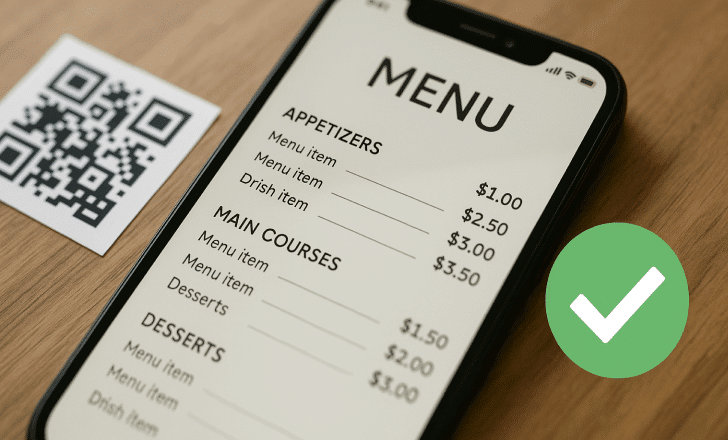
Can scanning a QR code infect your phone?
Not directly. Simply scanning a QR code with your smartphone camera does not install malware or compromise your mobile device. But if the code sends you to a shady website, it could lead to phishing or prompt you to download a harmful app.
That’s why it’s crucial to exercise caution when scanning any code in public spaces, especially if it looks tampered with or unfamiliar.
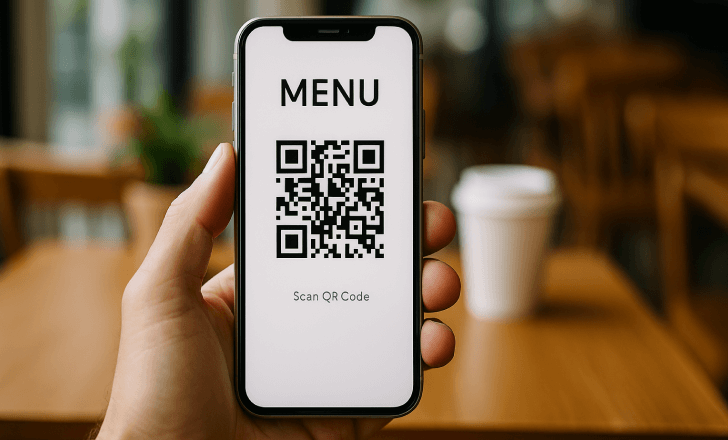
How to identify a legitimate QR code menu
When in doubt, here are a few simple signs that a QR code is safe to scan:
- It’s printed professionally and integrated into the restaurant’s signage, tabletop, or menu.
- The QR code menu matches the restaurant branding and visual identity.
- Scanning opens a clean, well-designed website (not a generic form or ad-heavy page).
- The URL is clearly tied to the restaurant’s domain or a known platform.
If the code redirects to a suspicious link or a site asking for personal or financial information, stop immediately.
Tips for safely using QR codes at restaurants
Here’s how to stay safe while still enjoying the benefits of digital menus and contactless ordering:
- Preview links before clicking. Most smartphones will show the destination URL before you open it.
- Avoid scanning codes that look altered or appear pasted over another code.
- Don’t enter personal data or passwords unless you’re absolutely sure the site is secure.
- Be cautious of payment requests through QR codes unless you initiated the order or bill.
- Keep your phone’s software updated to protect against vulnerabilities that could be exploited through web browsers.
These basic precautions can protect you from nearly all known QR code-related threats.
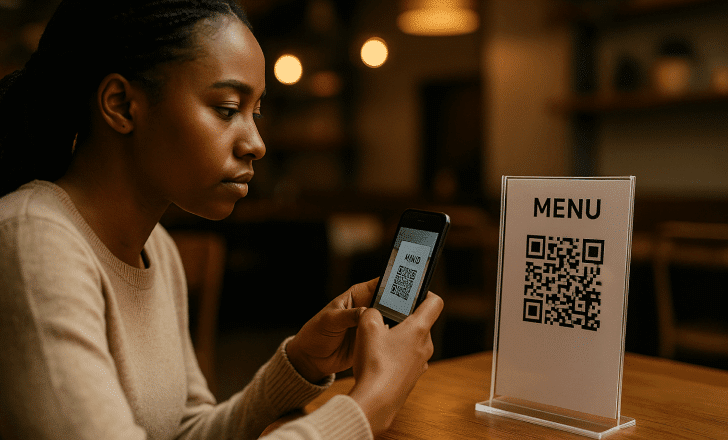
What restaurants can do to protect their customers
Restaurants have a responsibility to create and manage their QR codes responsibly. That means:
- Using a reliable QR code generator with secure hosting, like QRCodeKIT
- Printing codes on durable materials to avoid tampering
- Avoiding the use of unbranded URL shorteners
- Placing codes in visible, consistent locations
- Regularly testing their QR codes to ensure they link to the correct specific web page
By doing this, they help ensure that customers enjoy a seamless and safe QR code experience.
Can QR code menus collect data?
Yes, but it depends on how they’re set up. A dynamic QR code—which redirects to a trackable URL—can capture QR code leads, track scan data, and even segment behavior by device or location.
While this can be helpful for improving service, businesses should be transparent about what’s being collected and why. Ethical use of this data is key to maintaining trust.
Should I use QR codes instead of printed menus?
It doesn’t have to be an either/or situation. Many restaurants now offer both options: a physical menu for those who prefer it, and a digital menu via QR code for customers who value speed and convenience.
Offering both also ensures accessibility—some users may not have smartphones, or may simply prefer to browse a traditional menu.
How does QRCodeKIT ensure QR code safety?
At QRCodeKIT, we’ve helped thousands of restaurants and businesses create secure, dynamic QR codes since 2009. Our platform allows users to:
- Create QR codes with branded visuals or artistic styles
- Provide QR codes that are secure and regularly updated
- Manage destination links without reprinting
- Avoid phishing emails and scams through secure QR hosting
We never store sensitive data in the code itself. The link behind the QR is the only active component, and it can be modified or disabled anytime by the owner.
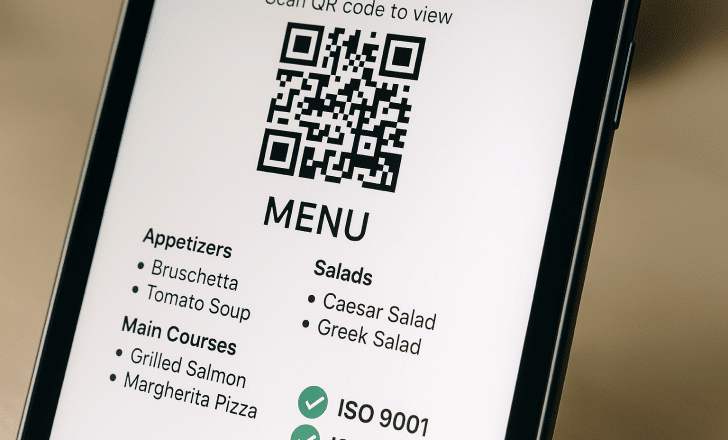
Can a single QR code handle multiple menus?
Yes—especially with dynamic QR codes, which can redirect based on time of day, device type, or location. A restaurant can use one single QR code for breakfast, lunch, and dinner menus or even switch between promotional offers and seasonal dishes.
This flexibility allows restaurants to keep their communication fresh without cluttering tables with multiple codes.
Do QR codes work on all devices?
Absolutely. Most mobile phones today come with a camera app that supports QR scanning. Whether you’re on Android or iOS, scanning a QR code is as easy as pointing your smartphone camera at it and tapping the link that appears.
You don’t need a separate app in most cases. Just make sure your phone’s operating system is up to date.
What if a customer doesn’t have a smartphone?
Not everyone uses QR codes, and that’s okay. Restaurants should keep at least one printed menu available to accommodate all guests. Offering choice—not forcing adoption—is the best way to promote accessibility and trust.
Are QR code menus a passing trend?
On the contrary, they’re becoming a fixture. As more people become comfortable using mobile devices for mobile payments, shopping, and content access, QR codes offer a familiar, frictionless experience.
They’re not just for restaurants either—QR codes now appear on everything from business cards and product packaging to event flyers and public signs.
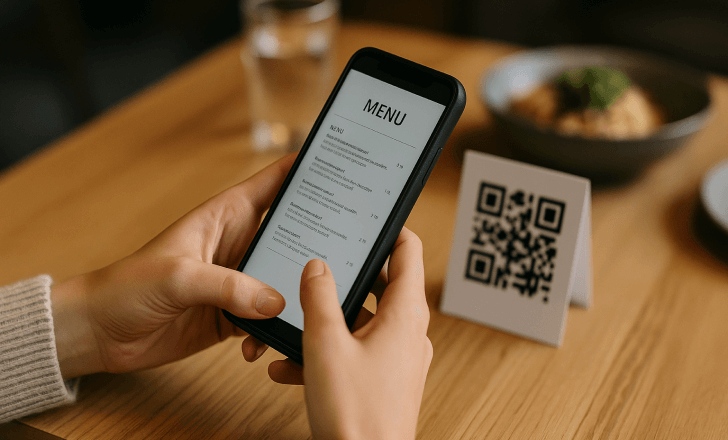
What role do QR codes play in digital ordering?
Digital ordering is one of the strongest use cases for QR menus. A well-designed flow allows customers to browse, customize, and submit orders—all without waiting for a server. This speeds up service and reduces errors.
By linking directly to a specific web page, such as a cart or checkout page, restaurants can shorten the path between decision and action.
Can QR code menus improve customer engagement?
Definitely. A smart QR implementation can guide users from a menu to your social media pages, feedback forms, or special offers—helping you generate QR code leads and build long-term relationships.
This transforms the humble QR into a true engagement tool.
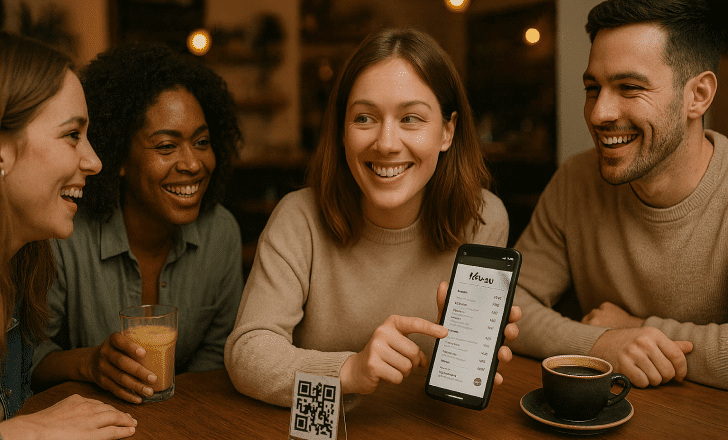
Final thoughts: Are QR code menus safe?
QR code menus are generally safe, incredibly convenient, and a great tool for modern hospitality. But like any digital link, they can be misused.
As a user, staying aware of suspicious links and scanning only legitimate QR codes from trusted sources is key. For businesses, using a reliable platform like QRCodeKIT helps eliminate risks and deliver a better experience.
Done right, QR menus can enhance efficiency, reduce printing costs, and help restaurants stay agile in a fast-moving world.
